Arsenal for special forces
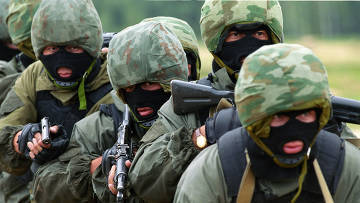 One of the main directions of development and improvement of special intelligence remains to increase the combat readiness of formations and military units, equipping them with reconnaissance equipment and special weapons.
One of the main directions of development and improvement of special intelligence remains to increase the combat readiness of formations and military units, equipping them with reconnaissance equipment and special weapons.Over 60 years stories Special Forces for arming and equipping units and formations. Research institutions and industry have created quite a few of the most varied types of weapons, equipment and equipment. At the same time, in the Soviet Union, industry was focused on the production of large quantities of products, special forces with their small and sometimes single orders were not a welcome customer of the “red directors”.
Nevertheless, in the 60-x – 70-s, successful types of silent weaponssuch as SME, Thunderstorm pistols, NRS (a scout's knife that shoots), a silent version of a Stechkin automatic pistol, as well as a silent special shooting complex Silence (SSK-1) based on an AKMS Kalashnikov automatic rifle. Currently, he was replaced by the Canary complex, based on the 7,62-mm AKS 5,45 automatic machine in.
A unique mine-explosive complex with the provisional name "Menagerie" was developed. The complex was so called for the names of the mines and charges included in it: "Woodpecker", "Hedgehog", "Cobra", "Jackal", etc.
He was replaced by universal cumulative charges KZU-2 and UMKZ, which are used today.
HF radio stations were created and improved for communication with the Center (Р-254, Р-353 л, Р394 km, etc.), as well as VHF radio stations for communication within the Р-352 group, Р-392, РХNUMX ПП receivers, etc. A special field uniform was designed, styled as an enemy, so that the group in the enemy's rear would not immediately catch the eye. It would be appropriate to recall an army anecdote: “Nothing betrayed the Soviet intelligence officer-saboteur. Neither a ushanka with a red star, nor a parachute dragged behind it. ”
The war in Afghanistan gave impetus to the development of special weapons and equipment. The war forced to reconsider the tasks and tactics of special forces.
The reconnaissance missions faded into the background, and the strike component of the special forces became more distinct. This required heavier weapons and equipment. The staff of the individual units that fought in the DRA included the BMP-1, the BMP-2, and the BTR-70. The groups included weapons compartments (AGS-17 and RPO). The group consisted of a staff of different periods from 6 to 4 Kalashnikov machine guns. In addition to regular heavy weapons, the special forces also mastered captured weapons, as a rule, made in China.
For operational communications over the telephone, the Severok K radio station was developed and entered into service, and for operational communications, special receivers and transmitters Lyapis and Okolysh.
Subsequent armed conflicts made their adjustments and requirements for special forces weapons. Military equipment and heavy weapons were returned to the detachments, which were put into warehouses after the withdrawal of troops from Afghanistan.
The period of the collapse of the USSR and the subsequent permanent reforming of the Armed Forces did not allow to fully provide parts of the special forces with new equipment and weapons. This is primarily due to the noticeable backlog of special forces in matters of equipment and technical security.
Despite the existing objective and subjective difficulties, research institutes and industrial enterprises still managed to develop, create and provide special forces units and formations with special weapons and equipment, albeit in volumes that do not fully meet their needs.
We will describe in more detail some types of weapons and equipment, their advantages and disadvantages.
7,62-mm machine gun 6 ПХNUMX "Pecheneg"
Developer - TsNIITOCHMASH. The machine gun is designed to hit enemy personnel, fire and vehicles, as well as air targets, and has better accuracy than counterparts, more than 2,5 times when fired from bipods and more than 1,5 times when firing from the machine.
The basis of the design of the machine gun taken 7,62-mm Kalashnikov machine gun (PC / PKM). Fundamentally new is the barrel group, providing shooting at least 400 cartridges without compromising the effectiveness of shooting. In addition, there was no need to complete a machine gun with a replaceable barrel. The barrel's vitality is 25 – 30 thousand shots when firing in intensive modes. The machine gun can fire using the entire range of 7,62-mm rifle cartridges.
12,7-mm machine gun "Kord"
Designed to combat lightly armored targets and fire weapons, destroy enemy manpower at ranges up to 1500 – 2000 m and hit air targets at slant distances up to 1500 m. tracer bullets.
An inexperienced reader may wonder why they created this machine gun, if they were armed and served faithfully for the same purpose, the NNS 12,7 “Rock” machine gun under the same cartridge? However, with the apparent similarity of the main characteristics of the machine gun "Kord" has a number of significant advantages. When creating a machine gun, designers managed to significantly improve the accuracy of fire from a machine gun by reducing the impact of automation mechanisms on the barrel. Due to the reduction of recoil, it was possible to increase the stability of the Kord machine gun and to develop its infantry variant on the bipod. The "cliff" could fire only from the machine, and even then in short bursts due to recoil, or the machine had to be rigidly fixed to the ground.
Also significantly increased the vitality of the trunk, which eliminates the second barrel from the kit, and thus reduce its weight.
Grenade complex AGS-30
The AGS-30 automatic grenade launcher was developed in the first half of the 1990-ies in the Tula instrument making design bureau as an easier and correspondingly more maneuverable replacement for the successful AGS-17 grenade launcher. For the first time, a new serial grenade launcher was shown to the public in 1999, its serial production was established at the Degtyarev plant in Kovrov.
40-mm hand grenade launcher six-6 G-30
The RG-6 grenade launcher (GRAU 6 G30 index) was developed in a hurry in 1993 at the TsKB SOO (Central Design Bureau of Sports and Hunting Weapons, the city of Tula) to arm troops operating against separatists in Chechnya. Small-scale production of the WG-6 was launched in 1994 at the Tula Arms Plant, and the grenade launcher almost immediately began to enter the troops and some units of the Ministry of Internal Affairs. In recent years, adopted for service, began to arrive in the special forces of the Armed Forces.
RPG-26 and RPG-27
Adoption in the 80s of the last century tanks 3rd post-war generation, having enhanced security due to the diversity of armor and the use of dynamic protection, forced to increase the power of anti-tank infantry. Soon three new anti-tank munitions are being adopted - the RPG-26 Aglen anti-tank grenades, the Tavolga RPG-27 and the PG-7 BP anti-tank grenades.
Grenade RPG-26 adopted by the Soviet army in 1985 year and is designed to combat tanks and other armored objects, the destruction of enemy personnel, located in the shelters and structures of the urban type.
The starting device RPG-26 is a thin-walled fiberglass pipe.
In the RPG-26, the deficiencies that existed in the previous versions of the RPG-18 Fly and the RPG-22 Netto were eliminated. First of all, the impossibility of a reverse transfer from the combat position to the marching position The RPG-26 grenade has no sliding parts, and bringing it into a combat position and back is carried out in 2 – 4 seconds.
The grenade PG-26 is similar in its structure to the grenade PG-22, but it has an increased power of action at the target due to the improved design of the shaped charge using explosives "Okfol". The armor penetration of the RPG-26 was up to 400 mm of homogeneous armor. Such armor penetration to combat modern tanks was not enough. Soon, an RPG-27 reactive anti-tank grenade with a tandem warhead was developed and put into service. The armor penetration of the RPG-27 was brought to 600 mm.
Given the short period of adopting four types of reactive anti-tank grenades (RPG-18, RPG-22, RPG-26 and RPG-27), all four anti-tank melee infantry weapons systems were simultaneously armed. But only one of them could successfully fight modern tanks.
However, the Soviet and Russian army at the turn of the millennia fought not with a likely, but a real enemy. In a series of armed conflicts of the last two decades, the irregular armed formations (with the exception of the operation to force Georgia to peace in August 2008) were opposed to the Russian soldier, and anti-tank weapons were assigned the task of fire support weapons. In all of them, spetsnaz units widely used RPG-18, RPG-22 and RPG-26 anti-tank grenades, and during the second Chechen campaign, RPG-27. However, they were replaced by a more effective fire support weapon - jet assault grenades.
RSHG-1 and RSHG-2
Modern combat operations require that infantry and special forces units have powerful but mobile weapons support systems. First of all, such weapons must reliably and effectively hit equipped firing points, crews and combat crews, lightly armored vehicles (LBT). As the experience of combat operations in Afghanistan and other hot spots has shown, the use of traditional RPG cumulative ammunition for these purposes is not effective enough.
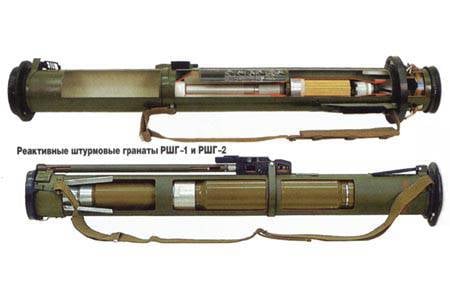
The RSHG is an individual means of arming a soldier designed to destroy enemy personnel in field and city type shelters, as well as disabling unarmored and lightly armored enemy equipment. The warhead of RSHG thermobaric equipment has a high efficiency of cumulative, high-explosive, fragmentation and incendiary actions at the same time. When a grenade hits an obstacle, it collapses, forming a cloud of a volume-detonating mixture, the detonation of which causes combined damaging factors. RSHG is most effective in the destruction of enemy personnel, located in a confined confined space (dugouts, trenches, caves, buildings, armored vehicles and cars).
Specialists of FSUE “GNPP“ Bazalt ”developed RSHG-1 jet assault grenades (caliber 105 mm) and RSHG-2 (caliber 73 mm). The block-modular principle of design and production most fully meets modern technologies.
A fighter who has the skills to handle RPG-26 or RPG-27 can easily use the RSHG-1 and RSHG-2 on the battlefield without special retraining.
The design of the warhead is patented and has no world analogues.
RSHG-1 is served by one person, the time of conversion from a traveling position (on a belt) to a combat one (shooting from a knee or standing) is calculated in several seconds.
The RSHG-2 rocket assault grenade has an 350 m aimed fire. A characteristic feature of the RSHG-2 is the possibility of defeating manpower hidden in engineering structures, including those in personal armor, even if indirectly hit by an embrasure.
Weight - 4 kg.
At the beginning of the 2000s, the RSHG-1 and RSHG-2 were effectively used by special forces in the North Caucasus region. The first samples of RSHG-1 entered service only after the completion of the active phase of the counter-terrorist operation in the North Caucasus region. RSHG in these conditions were used mainly by subunits of the GRU special forces to destroy the enemy in dugouts, caches, natural and artificial caves, crevices and ravines.
Small jet flamethrower
Shifting the emphasis of armed struggle to combat operations in settlements requires the presence of powerful fire weapons in the infantry units of the opposing sides, which can reliably and effectively hit the enemy who is hiding in buildings and fortifications. Such conditions of military operations require equipping a serviceman with light highly effective melee weapons. Currently, this problem is being solved by the use of ammunition with warheads of multifactorial striking action, which possess thermobaric charges. The RShG-1 and RShG-2 rocket-propelled assault grenades and RPO-A and MPO flamethrowers successfully occupied the niche of the "assault" weapons. These weapons can be effectively used by infantry, reconnaissance, reconnaissance, sabotage and anti-terrorist units when they are in isolation from armored vehicles, the absence of artillery and aviation support
Russia occupies a leading place in the world in the production of detonating melee weapon systems.
FSUE “GNPP“ Bazalt ”has developed a small-sized rocket flamethrower (MPO) with a single-use starting device in thermobaric (MPO-A), smoke (MPO-D) and smoke-igniting equipment (MPO-DZ).
MRO-A small-sized jet flamethrower is designed to carry out fire support for assault teams, defeat enemy fire points, equipped in rooms with window and door openings at a distance of up to 300 m. MRO-D is used for blinding firing points and instantly setting protective aerosol curtains, and MPO -DZ - for arson premises.
Thanks to the original designs of the jet engine (reduced parameters affecting the shooter when fired - excessive pressure and thermal field), the use of MPO is allowed when firing from rooms with limited volume (20 cubic meters). Firing is possible at declination angles up to 90 ° and elevation angles up to 45 ° (from the upper floors down, on the upper floors, from floor to floor, etc.).
82-mm mortar 2 B14 "Tray"
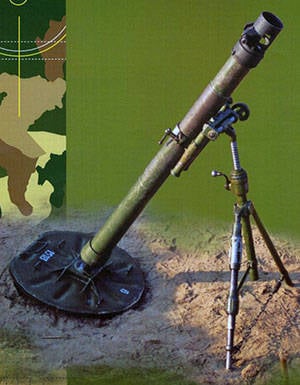 With the start of the war in Afghanistan, it became clear that in mountainous conditions, "light" 82-mm mortars are more effective artillery means of direct infantry fire support.
With the start of the war in Afghanistan, it became clear that in mountainous conditions, "light" 82-mm mortars are more effective artillery means of direct infantry fire support.A new 82-mm 2 B14 “Tray”, a lightweight 2-mm mortar, was tested in Afghanistan. Mortar 14 BXNUMX is arranged according to the classical scheme of an imaginary triangle. In the stowed position, the mortar is disassembled and carried or transported in three packs.
In the course of the counter-terrorist operation in the North Caucasus, 82 2 B14 mortars were widely used by federal forces and gangs. When the city of Grozny was captured in January 1995, the federal troops suffered serious losses from the enemy’s mortar fire. With an extensive network of observers, spotters and informers, gangs used the tactics of fire raids on the concentration of federal forces in the courtyards and on the streets. The 82-mm mortar has once again demonstrated its effectiveness as an artillery weapon of partisans and reconnaissance and sabotage agencies.
At the beginning of the 2000-ies adopted for individual detachments and special-purpose teams 82-mm mortar 2 B14 (2 B14 – 1) "Tray".
The main advantages of 82-mm mortars as special forces weapons are the high accuracy and power of ammunition, the possibility of concealed firing, high rate of fire (10 – 25 shots / min.) And the mobility of this artillery weapon system.
In the second Chechen campaign, during the destruction of R.Gelayev’s gang, in December 2003, thanks to the high professionalism of their mortar design, the scouts managed to block the enemy’s fire in the gorge for two days, and then support the attack forces that destroyed the main forces of the gang.
For shooting from all domestic 82-mm mortars used fragmentation six-penny (old samples) and ten mines, as well as smoke and lighting mines. To increase the firing range for a mine, additional powder charges are mounted (charge No. 1, 2, 3 and “long-range”). Mortar ammunition is transferred by calculation in special trays for 4 mines or in bags-bales.
Silent mortar complex 2 B25
Currently, Russian designers are developing a 82-mm silent mortar complex BSHMK 2 B25 and 82-mm mortar with an increased range of fire up to 6000 m.
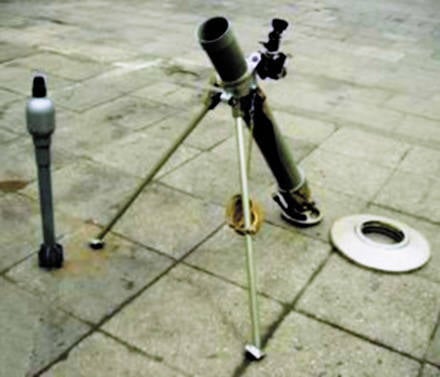
Designed for special forces in order to ensure the secrecy and surprise of combat use due to noiselessness, flamelessness and smokelessness with the defeat of enemy personnel in the means of individual armor. Mortar weight not more than 13 kg. 2 calculation The effectiveness of the fragmentation of mines at the level of standard 82-mm mines.
About sniper weapons
The press recently discussed the reason for purchasing Western-made sniper rifles for our special forces. Despite the fact that we have a seemingly sniper rifle CB-98 Izhevsk plant, not inferior to the main characteristics of Western counterparts. Unfortunately, the quality of its production is very low, which is unacceptable for sniper rifles. And the good old SVD today generally can not be considered a sniper weapon.
"Tigers" and "Ulans" special forces
State tests of prototypes of the all-wheel drive GAZ-2330 (Tiger project) began at the beginning of 2004. The American Hummer, carefully studied by the designers and the engine borrowed from it, allowed the company to create a car that is not inferior to a foreign counterpart on comparable technical factors. But created in the image and likeness of the "Hammer", the domestic "Tiger" is fundamentally different from its prototype.
Domestic "Tiger", in contrast to the "Hammer" vehicle of a narrow range of combat mission, in its parameters most likely refers to light armored personnel carriers. Domestic BTR-40 and combat reconnaissance and patrol vehicle BRDM-1 were similar to him in terms of characteristics and combat designation.
For special purpose units, a modification of the “Tiger” - GAZ-233014. After the state tests, the Tiger serial model, adopted for the supply of special purpose units as a special vehicle, was modified by about 80% of the prototype. For example, the frame became all-metal, without seams, the turret was improved, the ergonomics of the troop compartment improved.
At the same time, there are still problems with the suspension, which accounts for 60% of all failures. It does not stand the car with a full weight 7200 kg when driving on rough terrain. The car sags in such a way that the wheels rub against the wheel arches, the bolts of the torsion twist are destroyed and the eyelets of the suspension arms fail. The system of regulation of air pressure in tires with electronic control gives surprises, trying to leave on flat tires at the most inopportune moment. Drum brakes that work well on armored personnel carriers, with an intensive cycle of acceleration and deceleration, are very hot, leading to a sudden failure.
It would seem that the appearance in service of the Russian special forces of the Tigr armored car does not in any way exclude the presence in combat formations of multi-purpose light vehicles of all-terrain vehicles. For these purposes, the designers on the basis of the UAZ off-road vehicle created a Gusar combat vehicle equipped with a Toyota petrol engine. According to its tactical and technical characteristics, according to NATO classification, it belongs to the class of light assault vehicles (Multipurpose Lightweight Vehicle). On the reinforced frame, placed inside the cabin, the installation on the turrets of the 7,62- and 12,7-mm machine guns and the 30-mm automatic grenade launcher is provided. The tests of the car at the test site of the 21 th Research Institute of the Russian Ministry of Defense were successful After that, the Gusar cars entered all the special-purpose brigades, but their operation in the North Caucasus region revealed a number of shortcomings. First of all, it is a weak undercarriage, not designed for a powerful Japanese engine (10 – 12 drives bridges and suspension assemblies for thousands of kilometers) and poor handling at high speeds due to a shifted center of mass. If you can put up with the second disadvantage, because “Gusar” was not created for races on the highways, then the low resource of the undercarriage for the special forces vehicle is a serious disadvantage. Cars "Gusar" were removed from service.
The development of the car "Ulan" on the basis of the car VAZ 2121 "Niva". It was created six prototypes, but because of the poor characteristics of the car was not accepted for service, and work on it stopped.
It is possible that in order for domestic special forces to receive a truly modern car that satisfies all needs, it is necessary to create a completely new model.
Flies "Pear", you can not eat ...
Light UAV in the composition of the military ASU under the name "Pear" 21 E22-E produced by the company "Izhmash - Unmanned systems." Small and compact UAV "Pear" refers to a small UAV.
At working heights, the 150 – 300 meters are almost invisible to the naked eye.
At present, the Pear’s serial model is equipped with a stabilized video camera, it has a range of real-time video transmission — 10 km, and a range with photographic equipment — 15 km.
The disadvantages include the fact that the Pear is flying based on the American GPS navigation system, which, if necessary, the Americans can close for others. This is due to the fact that GLONAS receivers are ten times heavier and five times larger. The images received from the “Pear” have both rectangular and geographical coordinates.
At working heights, they are really not very noticeable, but at the same time, they themselves from this height are able to see an object of size ... 10 x10 meters.
It should be noted and the fact that the emergence of a microblade in the air is often a serious unmasking factor signaling to the objects in question about the presence in their area of responsibility of the units or groups representing the danger. Not by chance in the United States began work on the creation of a microblac in appearance that is not different from a bird.
The adoption of such UAVs for the armament of ground forces is undoubtedly a positive step.
Of the listed developments in parts there is a small amount or even samples for study. And the bulk is obsolete samples.
For intra-group communications, the P-392 still costs. Not only was this radio station morally obsolete twenty years ago, and since the fleet of radio stations has also not been updated in recent decades, it has become obsolete and physically worn out. Therefore, the radio station in a wretched state. Officers planning a trip to the war are usually dropped and they buy VHF radio stations from foreign manufacturers because they want to provide themselves with a stable connection within the group. The same applies to collimator sights for machine guns. Not only that not all machines allow you to mount them, so even those that are there are not enough sights.
The form from Yudashkin is not intended for service at all. Fighters buy the field uniform themselves, as well as sleeping bags and much more.
The Georgian-Ossetian conflict assisted the special forces in providing equipment and uniforms. But he did not give impetus to the conduct of new developments. Just managed to take a sufficient number of trophies.
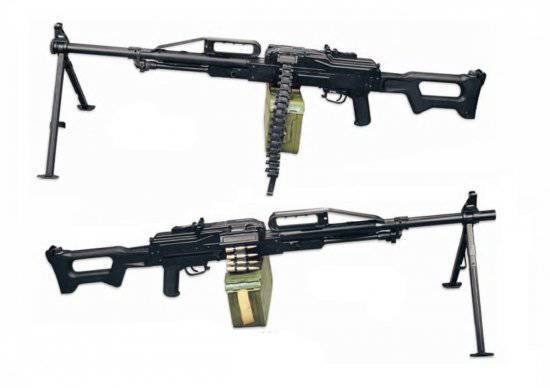
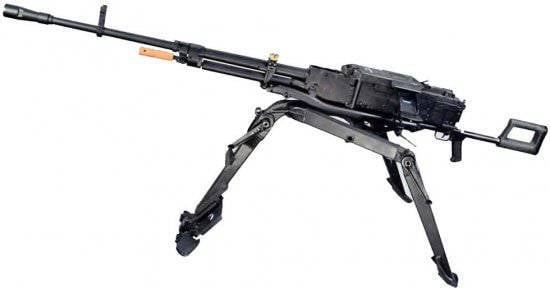
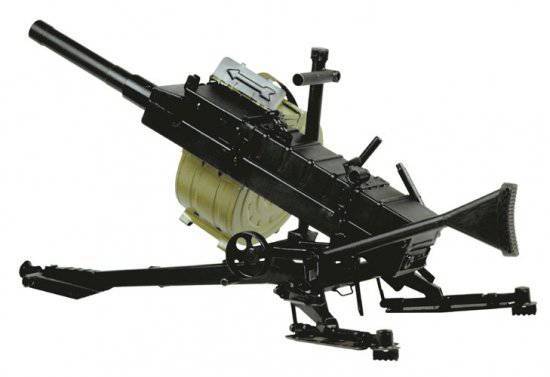

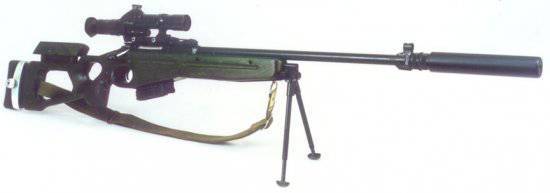
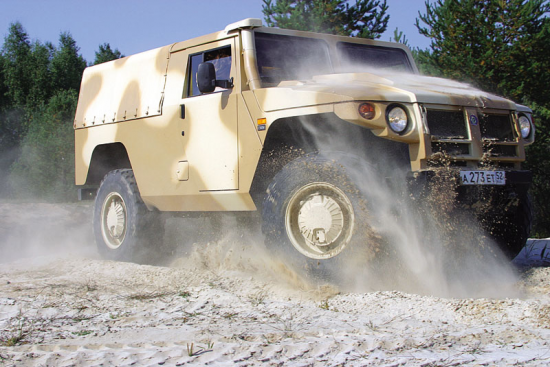
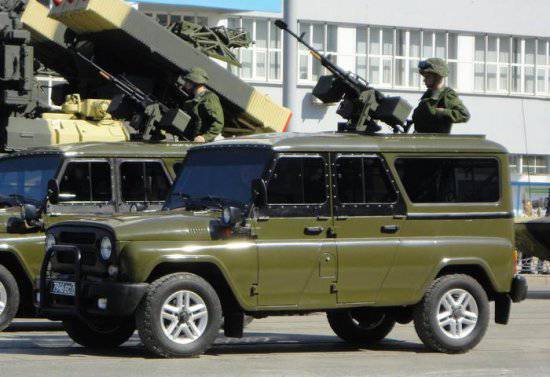
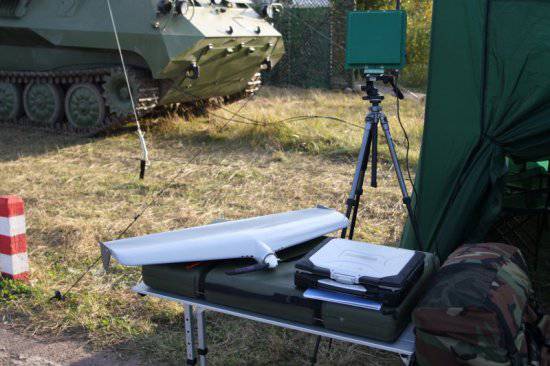
Information